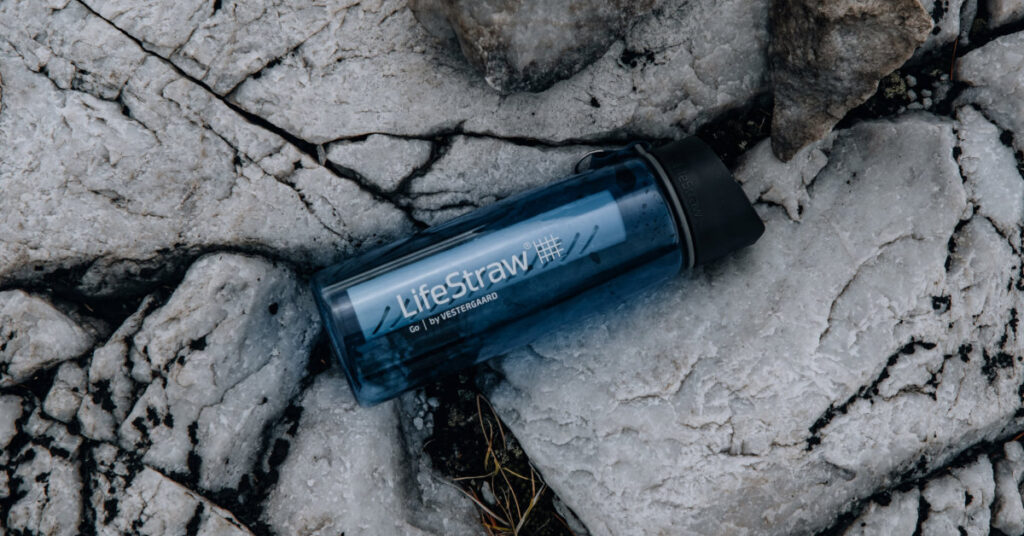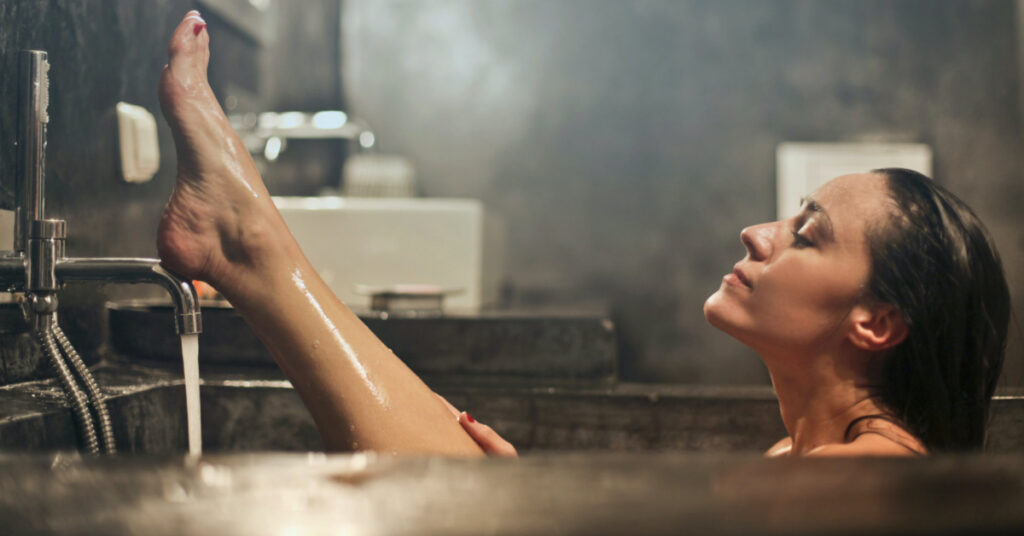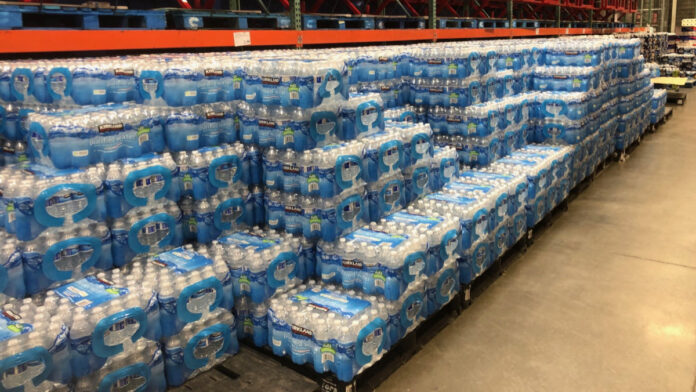When it comes to the Big Three of survival (food, water and shelter), I fear many people underestimate the importance of water, thinking that a water filter or two will address their needs. That’s a good start, but that’s all it is.
Don’t get me wrong, I like water filters. I have table-top models that can hold 3 gallons, plus spare filter cartridges, and I have hand-pump models. I also have sports bottles that filter the water when you suck it through the straw. But where will you get your water, and how will you transport it from the source to the location where you need to use it? Are you near a stream or a lake? How clean is that water?

Water Transport
Right now, we don’t have to worry about water transport; you turn on the tap and water is transported to your kitchen, your bathroom, the utility sink, or an outside spigot. Have you considered what will you do if the local water utility stops pumping water? If you are lucky enough to have a well, do you have a manual pump, solar pump, windmill or other system to pressurize your water system when the power is out? Do you have a gravity feed system? If so, do you have spare parts and the knowledge to make repairs?
After the SHTF, many people will have to transport water in buckets or small containers like peasants in a third-world country. For drinking water, that can work, but if you need it for hygiene, cleaning dishes or washing clothes, sourcing enough water becomes larger challenge. If you need to water your garden, you could spend all day toting 5-gallon buckets to the garden. Here’s a suggestion: have a wagon and/or sled to help transport those buckets. It will be much easier, and you can haul more on per trip.
Want an easier solution? Have a hose, or lots of hoses. If there is a water source uphill from your garden, you might be able to run a few hundred feet of hose from the stream or pond to your garden. While traditional garden hoses may work, consider black polyethylene pipe (which is like a stiff hose) as a superior alternative over long distances. If the water source is downhill, look into building or buying a ram pump or configuring a solar pump. A slow trickle of water will fill up a 55-gallon barrel or other water storage vessel before you know it. Yes, you can get gasoline-powered pumps, but how long will you have gas available after the SHTF?
Even if you have a rain catchment system in your house, you need to have a backup system for periods of drought or if you spring a leak.
Drip Watering
If you are a serious gardener, you might already have a drip watering system. These are very efficient and can put water right where the plant needs it. Make sure you have stocked up on additional parts so you can repair, replace or expand your drip watering system. If you’ve been thinking about a drip watering system, get started now, while you still have a chance at finding parts. Watch some YouTube videos so you know the different systems and what tools and equipment you will need.
A word about automatic watering systems: They require electricity. If you get a system with an app to control watering from your phone, make sure it has a manual mode. That apps not going to work when the electric is out and your Wi-Fi router is down.
Water Storage
If you have a house, you could able to install a water tank inside your utility closet or basement. This won’t provide water to your faucets, but you can access the water inside without leaving the building.
If you have more land, buried storage cisterns or tanks designed for use above ground are available and can hold hundreds of gallons. I once lived in a farmhouse built in 1915. It had a brick cistern buried in the back yard. The cistern had a single pipe leading from it to the basement. That was considered running water 100 years ago. After a world-shattering disaster, a system like that fed by your gutters might make you the envy of your neighbors.
Clean Water vs Purified Water
I differentiate clean water from purified water. Clean water is water that does not smell, does not have particulate matter in it, and is suitable for many uses other than human consumption. Our mountain streams provide clean water we could use to flush our toilets, water our pets and livestock, water the garden, clean our clothes, and possibly even used to shower. Purified water is clean water that is filtered or otherwise treated to eliminate bacteria, protozoa, microscopic parasites, and maybe even viruses. You can drink purified water without getting sick or risking a bout of intestinal discomfort.
The requirements to filter our mountain stream water are different from filters for water found in urban or even suburban areas. First, there are no farms with chemicals or animals to contaminate the water upstream from us. Second, there is no industry and no potential chemical or oil spills. Our road is not paved, so the rain will not wash large amounts of car pollutants into our streams. All of these are possible in other locations.
If your potential water source has an oily sheen to it, bubbles of an off smell, make sure your filter not only removes bacteria and other biological contaminants, but has activated charcoal to remove chemical residue.
A lack of natural water and the danger of carrying water in an urban environment is a good reason to bug out, or to move before a disaster strikes. Getting water in a crowded environment may be difficult or dangerous.
While we are on the topic of illness, keep in mind that sanitation is critical in a post-disaster scenario. Washing your hands with soap and keeping clean can prevent the spread of many diseases. Don’t skimp on hygiene just because you don’t want to carry another bucket of water. Even a sponge bath is better than no bath.

Gray Water
Gray water is water from your bathroom sink, shower drain, or washing machine. I may have some soap or detergent in it, but isn’t contaminated with fecal matter or urine. (The latter is black water). If you are going to the trouble of carrying water to your sink, it will behoove you to capture the gray water and use it to flush your toilets or water your plants.
While not exactly a water topic, make sure you have plans for you will handle your sewage needs. While most people today would wince at the idea, more than half the country used outhouses as recently as the 1940s. They will become popular again if utilities are out for any length of time. What you don’t want to do is use your toilets until the sewage system backs up and creates a health hazard or makes your home unlivable.
Make sure your black water (or anyone else’s) does not contaminate your source of clean water. Many illnesses after a disaster result from drinking water polluted with bacteria from sewage or animal waste. Without modern medicine, waterborne diseases like cholera and dysentery can be killers.
Water Supply Redundancy
Clean water is so critical to life that you will want multiple sources of water and multiple methods to purify it. (While effective, boiling water should be your last resort.) In addition to filtering, there are chemical purification methods, some of which are good for short term use and others for long term. Make sure you have multiple methods for transporting water too, as plastic buckets can break if drone or dropped or have the handles pull out.
If you will have running water post-SHTF, make sure you have some basic repair parts, like toilet floats, wax seals, and a way to repair leaky faucets. I’ve even had to replace exterior water spigots. You should also have the equipment necessary to repair your piping system. If you have copper pipes, you should have spare pipe, solder, and a propane torch. For PEX tubing, have the appropriate tools and fittings. If your system relies on pumps, have a spare pump and critical parts.
Modern water systems are largely winter-resistant, but be sure you drain the pipes and winterize your water system if you cannot keep them warm post-disaster. The last thing you need is frozen pipes when you are already struggling to survive, a point driven home people during the Texas power outage in the winter of 2021.







